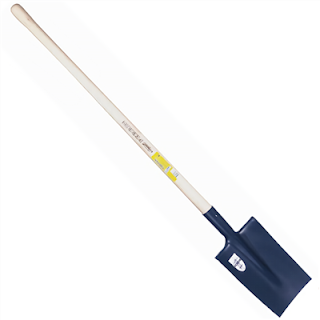There are about 200 species of Agave plants. The plant has sharp marginal teeth and a very sharp terminal spine. The stem is very short which makes it look stemless. During flowering a tall stem up to 12m grows from the centre of the rosette bearing a large number of short tubular flowers. After flowering the original plant dies. During its lifetime the Agave continually produces new offsets. The lifespan of an Agave is between 10 to 15 years.
What is the Agave plant used for?
a) Honey:
The flowers are edible and the stalk, in summer, before flowering, can be roasted or chewed to extract the Aguamiel. The leaves are ready to eat in winter and spring when they are rich in sap.
b) Sisal and hemp: Agave sisalana is used for sisal and hemp.
c) Beverages:
Tequila (alcoholic)
Tequila is made from Agave tequilana (Blue Agave). The plant is harvested when it is 7 years old. The harvesting is done manually with a machete-like tool curved at the top (coa) to remove the leaves, revealing the core, called pina, (looks a bit like a pineapple). The core is then chopped into quarters, baked to extract its fermentable sugars.
The oven is made of clay or brick called ‘hornos’ or in large stainless steel ovens. After baking, the pinas are crushed and shredded to extract the sweet juice inside called mosto. This is done by either an industrial mechanical shredder or in the traditional way, using a ‘tahona’ a large stone wheel that crushes and juices the pinas.
The mosto is combined with yeast and water in large, stainless steel fermentation tanks or large wooden barrels. It is then fermented which produces a liquid called ‘Pulque’, which the Aztecs drank before the Spanish introduced distillation.
After the fermentation (72 hours), the liquid is distilled. At that stage the yeast has eaten up the sugars to create alcohol and, as a bi-product, CO2. The more alcohol and CO2 they create, the less sugar there is for them to feed on and at a certain point if this continues the alcohol becomes toxic. For a better product we have to distill to separate the alcohol from the water.
The Agave juices are distilled which purifies the liquid. The distillation process separates the alcohol from the water by using evaporation and condensation. Because alcohol has a lower boiling point than water, the alcohol (ethanol) evaporates, in doing so it rises and travels through a cooling tube, which is connected with another vessel to condense.
The first distillation produces a cloudy liquid called ‘ordinario’. A second distillation is required to get a clear liquid. Very good quality is distilled three times before bottling. Water is added to make it 40 degrees proof.
After having been manufactured, the Tequilla is aged for 14-21 days minimum. The type of Tequilla produced after 14-21 days is called ‘blanco’ or ‘silver’. A better quality is ‘reposado’ which has been rested from 2 months to 1 year and ‘Anego’ is rested between 1-3 years. The Tequilla is rested in oak barrels which gives the Tequilla its golden colour.
Mescal (alcoholic)
To make Mescal, a different Agave is used called ‘Agave angustifolia’. Instead of vats, large underground pits are dug. Charcoal is used for the fire, followed by a layer of volcanic stones, then another layer of charcoal and volcanic stones. It is then left to reach a certain temperature. The Agave pieces are added. It is covered by a heat resistant tarp and is left smoking for one week.
The pieces of agave are then removed by hand and transported to a crushing machine where they are ground into small pieces. The Agave fibres are then taken to wooden tanks for fermentation which takes 3 days. It is then distilled and water is added before bottling.
Agave juice (non-alcoholic)
The most frequently used Agave for making agave juiice is the Agave americana. The agaves are taken to a facility where they are heated to no more than 48 degrees C. in a giant kind of pressure cooker to make the juice flow It is then chopped up, filtered and sent to a centrifuge and poured into bottles.
Agave syrup (non-alcoholic)
The juice is extracted from the core of the Agave, then filtered. It is then heated to 48 degrees C. At that temperature the carbohydrates, mainly “Inulin” are turned into a fructose (sugar). The filtered juice is a little thinner than honey, like a syrup. Nutritionally it is considered a form of soluble fibre (inulin which has minimal impact on blood sugar levels making it a suitable sugar for diabetics and weight control.
ENEMY OF THE AGAVES
What is the Agave Snout Weevil?
The weevil is a form of beetle about 2.5 cm long, black, with the scientific name Scyphophorus acupuntatus. They normally choose weak or old Agaves to lay their eggs. The bite of the beetle injects bacteria which cause the plant tissues to soften and eventually liquefy, easier for the larvae and beetle to eat the tissue, which eventually will result in the plant dying.
What can you do to protect your Agaves?
How to protect the Agaves around a diseased one: if the plant shows signs of infestation, remove it and every plant for several feet surrounding it. Then sift the soil and pick out grubs and beetles - fortunately they’re slow crawlers!
What to do once you have an infestation?
If the infestation is spreading like crazy it has to be brought under control. Drench the soil around the agaves with an insecticide that has imidacloprid as the main ingredient. One brand is Compare-N-Save Systemic Tree and Shrub Insect Drench which contains 1.47% imidacloprid and costs about $52/gallon on Amazon. Another brand is Bayer Tree and Shrub Insect Control with 2.94% imidacloprid. About $90/gallon on Amazon.
This information comes from America where these infestations appear regularly.
Author: Saskia Newlands


















